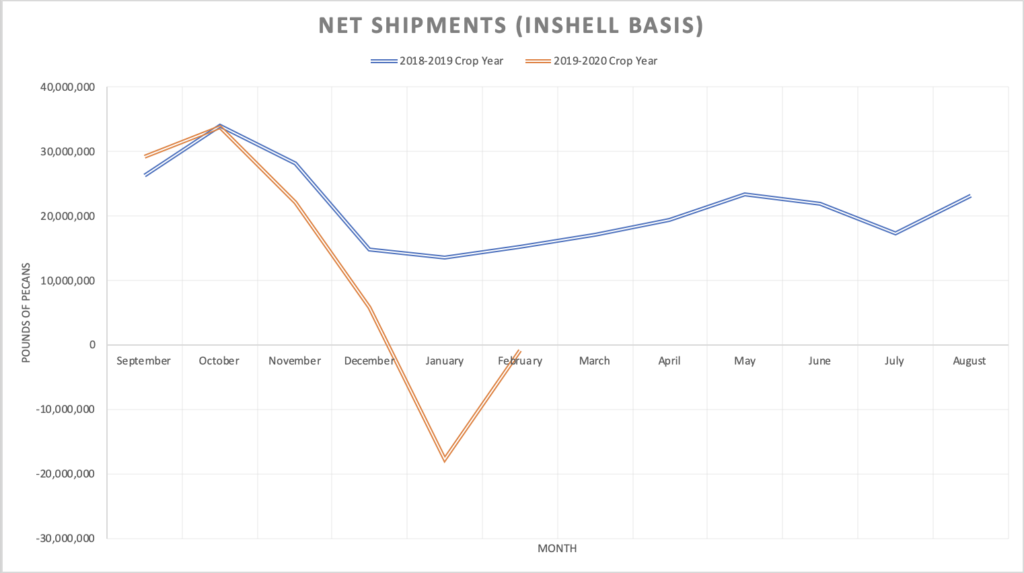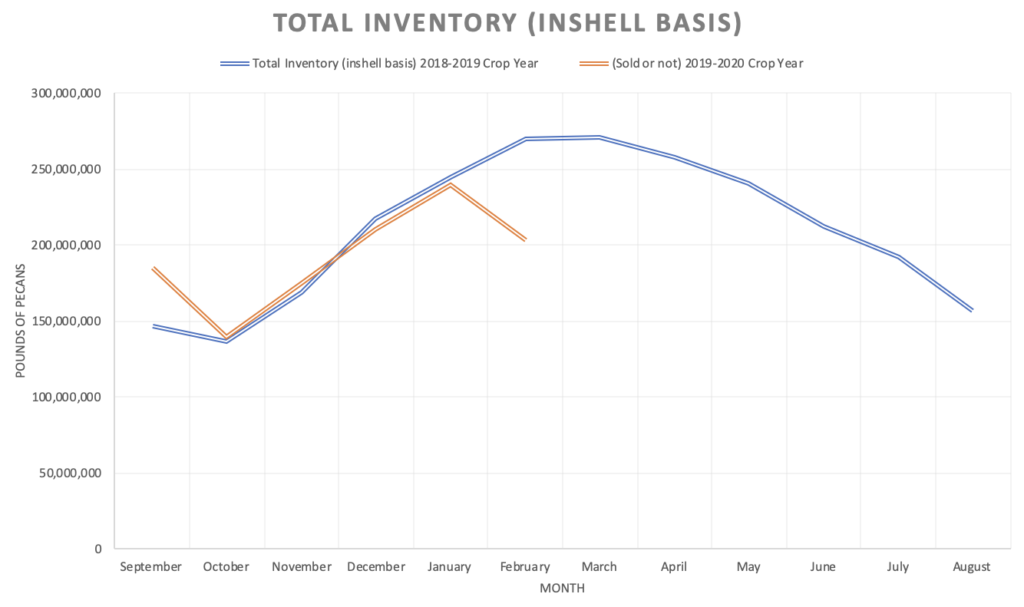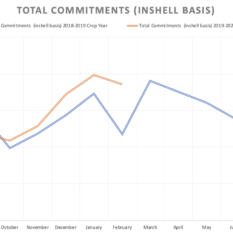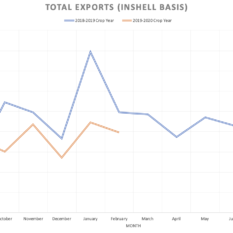APC’s February Position Report Shows Early Effects of COVID-19 & Offers Hope

While northern hemisphere growers spot their first buds and producers in the southern hemisphere enter the final phase of nut development, industry members are taking extra precautions to follow proper social distancing and sanitary-hygiene practices. Some pecan retail stores and storefronts in the United States are offering drive-thru services to customers; other storefronts permit free shipping. Elsewhere, farmers and pecan industry members are doing what they can to keep delivering food and product to people around the world. One grower in South Africa has said that they have stock in “strategic locations” so pecans will be readily available if needed.
The U.S. DHS Cybersecurity & Infrastructure Security Agency declared agriculture as an essential workforce; because of this, more than 45.5 million food industry employees continue to work on the frontlines to provide food and maintain the food supply chain.
A part of this effort, the pecan industry continues to grow, process, and transport pecans throughout this confusing time. According to the February 2020 Pecan Industry Position Report, 28,322,603 pounds of pecans were received during February.
For the 2019-2020 recent crop year, the reports show a sharp drop in net shipments starting in October and ending in January. Net shipments are the total pecans received from another handler during that reporting period deducted from the total shipments to retail, grocery, export, other trade sources, and other handlers. Net Shipments dropped into the negatives in January and remained so for February, where they increased slightly to end the month at a deficit of 880,021 pounds. This number indicates that more shipments were received from another handler than headed to grocery, retail, export, other trade sources, and other handlers throughout February.
The reports for the 2019-2020 crop year show that total inventory (inshell basis)—total inventory held, whether sold or not—mirrors net shipments’ trajectory by increasing quickly and dropping in February.
This pattern so far is similar to the previous crop year. For the 2018-2019 crop, total inventory climbed after harvest and peaked in February and March. Inventory then decreased gradually; like the 2019 crop year, net shipments paralleled this movement.
The February 2020 Position Report places total commitments—inventory sold, not delivered—at 185,381,585 pounds for that month, which again is a slight drop from January. Last year’s crop also showed a crop in February. Commitments are still high above the previous year’s levels and have been since October 2019. At this moment, it is unclear how the ongoing pandemic may affect commitments and shipments.
The most recent position report also indicates a quick drop in exports for February, following the 2018-2019 crop year’s movement. Total Exports for February 2020 currently sits at 7,934,522 pounds. Although the 2019-2020 crop year has generally shown lower levels of exports, there have been moments of hope that export levels would return to normal.
The updated November 2019 Position Report places total exports at 8,736,941 pounds (inshell basis), which may reflect the progress made by the U.S. and China toward a trade deal and the growing hope among industry members of a trade agreement.
At the end of November 2019, exports to China reached 2,379,180 pounds (inshell basis), and those to Hong Kong hit 1,063,667 pounds. These numbers are the highest reported for the 2019-2020 crop year, so far. Exports to China and Hong Kong rebounded in January to a combined total of 1,155,990 pounds (inshell basis) but dropped again in February, possibly reflecting China’s lockdown due to COVID-19. A total of 846,240 pounds (inshell basis) were exported to China, and 328,000 pounds reached Hong Kong in February.
At the National Pecan Shellers Association Mid-Winter Meeting on March 11 and 12, it was reported that buyers in other countries have been telling handlers not to ship pecans because there was no way to unload them at the ports due to COVID-19. The March 2020 Position Report scheduled to be published in April may show a more significant drop in exports as distributors address the crisis.
Although the total number of exports decreased in February, countries strive to maintain the food supply chain and mitigate barriers to on-time deliveries. The general increase in commitments and shipments to retail and grocery stores shown in this report may provide hope to industry members in these tiring times. These numbers offer evidence of more pecans being moved and reaching consumers. As the American Pecan Council publishes more reports, the pecan industry will not only develop a greater understanding of inventory, shipments, and trade but also garner knowledge for how the COVID-19 pandemic is affecting business.
You can find the newest report and all previous reports online on the “Analytics, Data & Market” page on americanpecan.com. For a full break down of last year’s crop and how data is collected, check out the article “What’s Around the Bend for Industry Data and Analytics” from the October 2019 issue of Pecan South.





